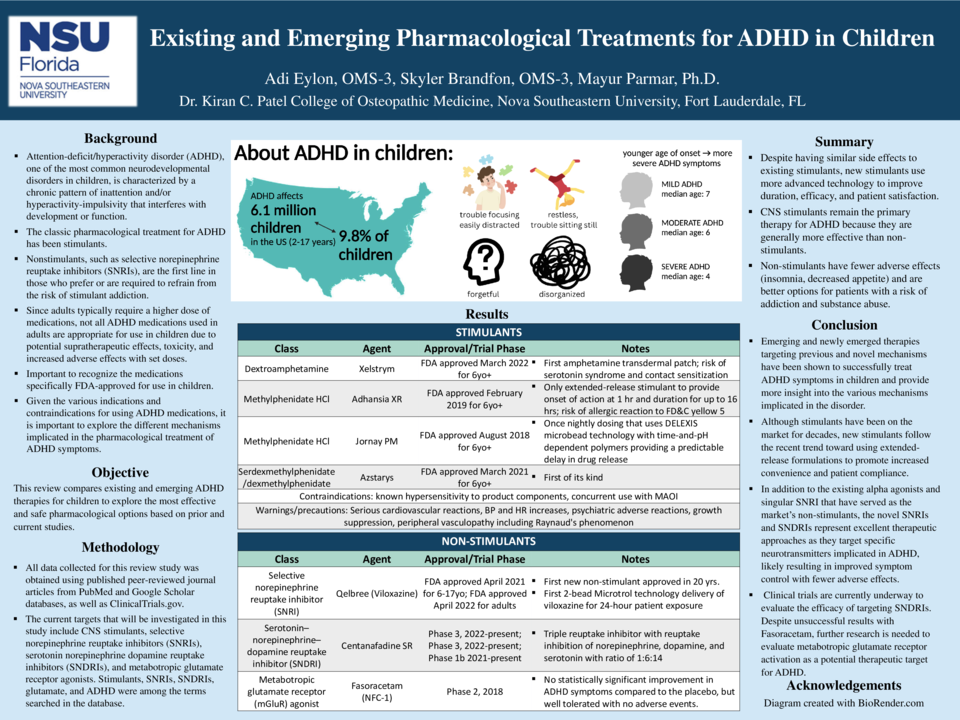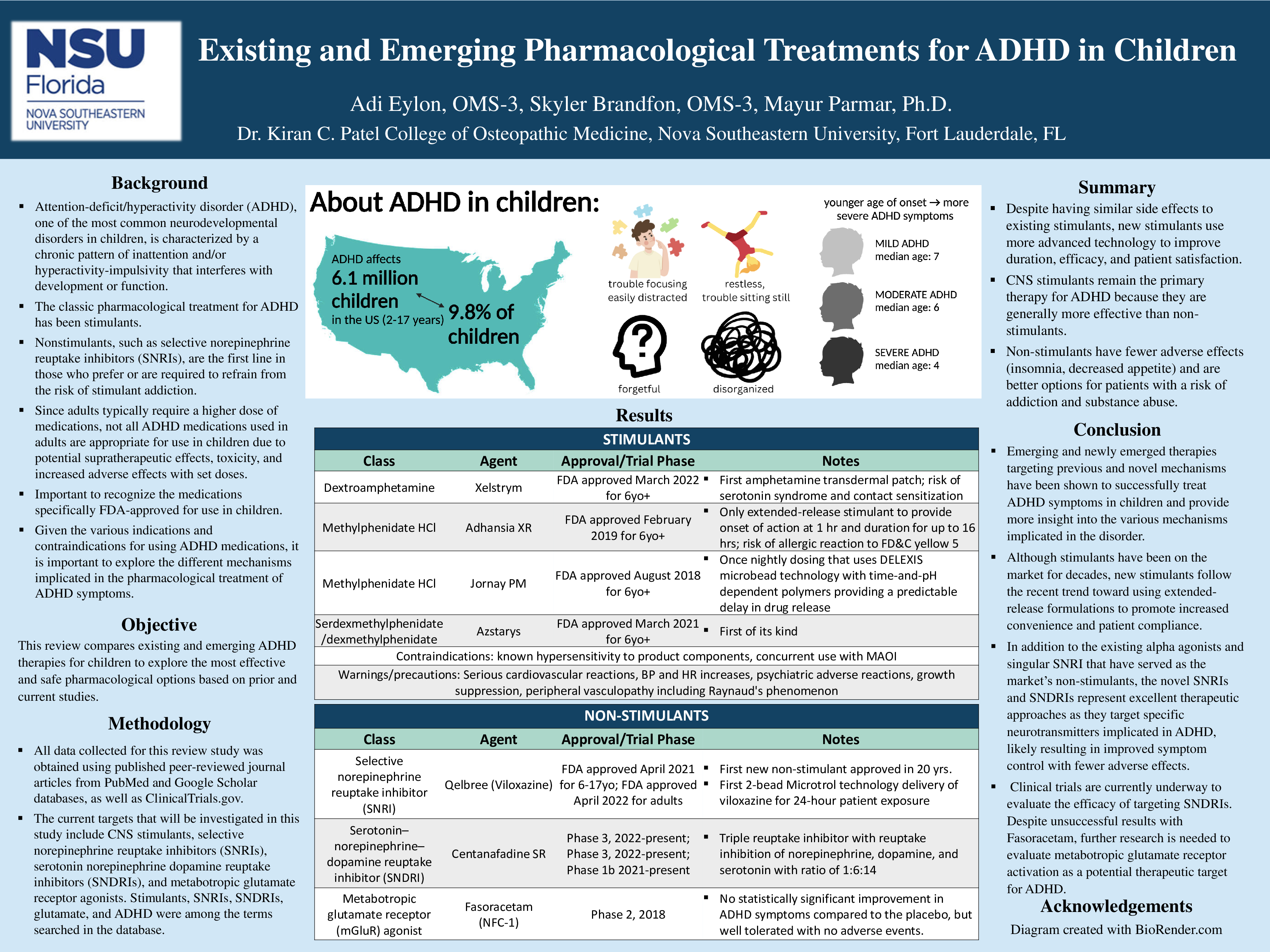Abstract
Background: Attention-Deficit/Hyperactivity Disorder (ADHD), one of the most common neurodevelopmental disorders in children, is defined by the DSM-V as a “persistent pattern of inattention and/or hyperactivity-impulsivity that interferes with functioning or development.” For decades, the gold standard of pharmacological treatment for ADHD has been CNS stimulants. Nonstimulants, such as SNRIs, are first-line for those who prefer or are required to refrain from the risk of stimulant addiction. Given the various indications and contraindications for use of ADHD medications, it is important to explore the different mechanisms implicated in pharmacological treatment of ADHD in children.
Objective: This research review compares and contrasts existing and emerging ADHD therapies for children, with the goal of exploring the most effective and safest pharmacological options based on previous and current studies.
Methods: The review compares and contrasts existing and emerging therapies for treating ADHD that are already FDA approved or undergoing clinical trials. The current targets that will be investigated in this study include: CNS stimulants, selective norepinephrine reuptake inhibitors (SNRI), serotonin norepinephrine dopamine reuptake inhibitors (SNDRIs), and metabotropic glutamate receptor agonists. Stimulants, SNRIs, SNDRIs, and ADHD were among the terms searched in the database (PubMed, Google Scholar, ClinicalTrials.gov).
Results: Since 2018, Four formulations of CNS stimulants and one formulation of SNRI have been FDA approved for ADHD treatment in children ages 6 and older. Jornay PM (methylphenidate HCl extended release) is a once-nightly dosing, Adhansia XR (methylphenidate HCl extended release) is a once-daily dosing, Xelstrym (dextroamphetamine) is a transdermal patch, and Azstarys (serdexmethylphenidate/dexmethylphenidate) is the first of its kind once-daily capsule. The fifth FDA approved drug is Qelbree (viloxazine extended-release capsule), an SNRI that is the first non-stimulant FDA approved ADHD medication in the past 20 years. Pharmacological agents undergoing clinical trials include Centanafadine (an SNDRI) and Fasoracetam (a metabotropic glutamate receptor agonist).
Conclusion: While there are many existing medications that successfully treat ADHD symptoms, emerging and newly emerged therapies targeting previous and novel mechanisms have also been shown to successfully treat ADHD symptoms in children and provide more insight on the various mechanisms implicated in the disorder. The recent trend toward use of extended-release formulations promotes increased convenience and patient compliance with medications. Even with the newly approved drugs, CNS stimulants continue to be the primary therapy for ADHD in children. However, selective norepinephrine reuptake inhibition is another successful mechanism that provides a non-stimulant option. Clinical trials are currently underway to evaluate the efficacy of targeting SNDRIs and metabotropic glutamate receptor activation, which can both provide novel therapeutic approaches to treating ADHD.





